Vectors vs scalar
Vectors have both a magnitude and a direction
Scalar quantities only have a magnitude
What can vector triangles determine?
The resultant vector can determine whether the forces are balanced (with a resultant force or not)
vector diagrams

Resolving vectors
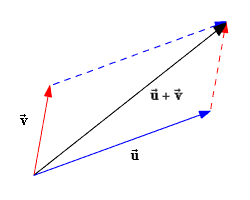
Split a vector into its horizontal and vertical components
can be resolved using trigonometry or parallelogram method
What is a moment?
The moment of a force about a point is the product of the force and the distance from its line of action to the point
Moment equation
Moment (Nm) = Force (N) x Perpendicular distance (m)
When an object is in equilibrium
The moments on it about a point are balanced
Total clockwise moment = total anticlockwise moment
What is a couple?
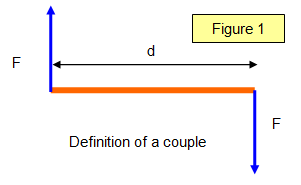
A pair of equal and opposite parallel forces acting on the same body that do not act in the same line
moment of a couple equation
Moment of a couple (Nm) = Force(N) x Perpendicular Distance Between Lines of Action (m)
Centre of mass
Where the mass of an object can be considered to be concentrated
The line of action
acts from the centre of mass and shows how gravity is acting upon the object
How can the centre of mass be found?
By suspending an object by a pin and then using a plum line to draw on the line of action-where they cross is the centre of mass
When will an object topple?
If he line of action falls outside of the width of the base then the object will topple
Newton's first law
The velocity of an object will not change unless a resultant force acts upon it
Newton's second law
F = ma
force in N equals mass in kg times the acceleration in ms^-2
Newton's third law
Every force has an equal and opposite force
In projectile motion...
The horizontal and vertical components are treated seperately.
Acceleration is due to gravity, hence only affects the vertical component and is positive if acting with the object and vegative if against it.
Friction
a force that oppoes motion when moving on a soliid
Drag
a force that opposes motion in a fluid, it usually increases with speed
Lift
an upward force created on an object as it moves through a fluid due to the shape of an object
Terminal Velocity
happens when frictional forces equal the driving force, causing equilibrium and zero acceleration
principle of moments
principle of moments states that for a body to be in rotational equilibrium the sum of clockwise moments at any point must be equal to the sum of the anticlockwise moments about that same point
terminal velocity for humans
~ 240-290km/h
In a closed system
momentum is conserved
meaning that the product of velocity and mass is the same before and after
occurs in both collisions and explosions
momentum equation
p = mv
momentum is conserved
p1 =p2
m1v1 = m2v2
inelastic collsion
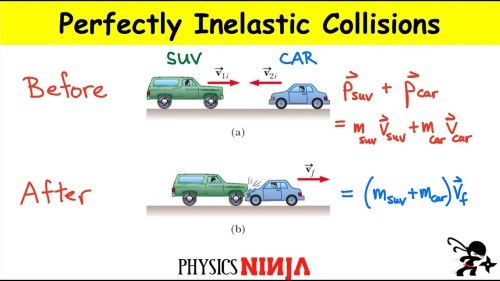
kinetic energy is not conserved
-> so we can work out the change in kinetic energy and hence how much energy is dissipated in other forms
change in energy = final kinetic energy - initial kinetic energy
Elastic collision
kinetic energy is conversed
Final kinetic energy = Initial kinetic energy
Impulse equation
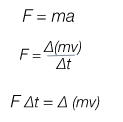
Impulse
The change in momentum
The produc of force and time
The area under a force-time graph
is impulse
Power, work done and efficiency equations

When is work done
when a force is applied across a distance
What is one watt equal to
One joule per second
Density equation

What is density?
Density is the mass of a material per unit volume
Conservation of momentum
Total momentum before = total after
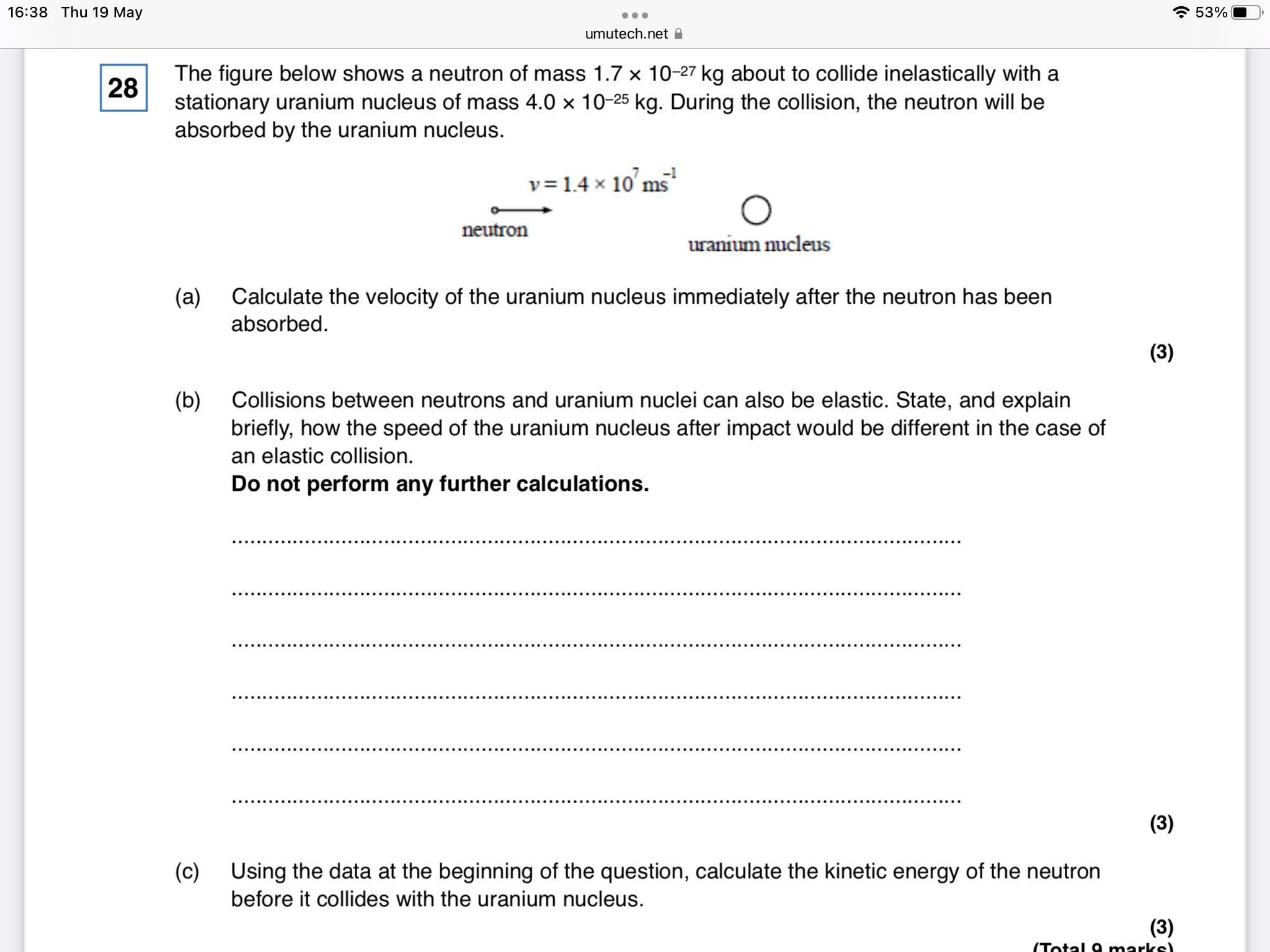
neutron will rebound / have velocity / momentum to the left
momentum transferred to the uranium will be greater
velocity of uranium will be greater